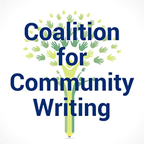Document Type
Article
Abstract
In fields such as sociolinguistics and composition and rhetoric, communication is increasingly understood as translingual, that is, as negotiated socially across languages. Those of us engaged in community literacy can and should recognize the deeply multilingual nature of the communities in which we work, and we should understand, embrace, and forward the translingual approach. Here I reflect on my first conscious attempt to teach translingually in a college course with a community-based learning component. I present an overview of the translingual orientation, reflect on the decisions I made as I prepared a college community-based learning course with translingual intentions but not overt translingual objectives, and examine some the students’ reflections that reveal their language attitudes at the end of the course. I argue that small, intentional decisions made towards a broader translingual orientation towards language and literacy make an immediate difference in how students think about language, and that those engaged in community literacy partnerships are in need of a theory of communication that the translingual approach can provide.
Recommended Citation
Kimball, Elizabeth. “Translingual Communities: Teaching and Learning Where You Don’t Know the Language.” Community Literacy Journal, vol. 9, no. 2, 2015, pp. 68–82, doi:10.25148/clj.9.2.009288.

